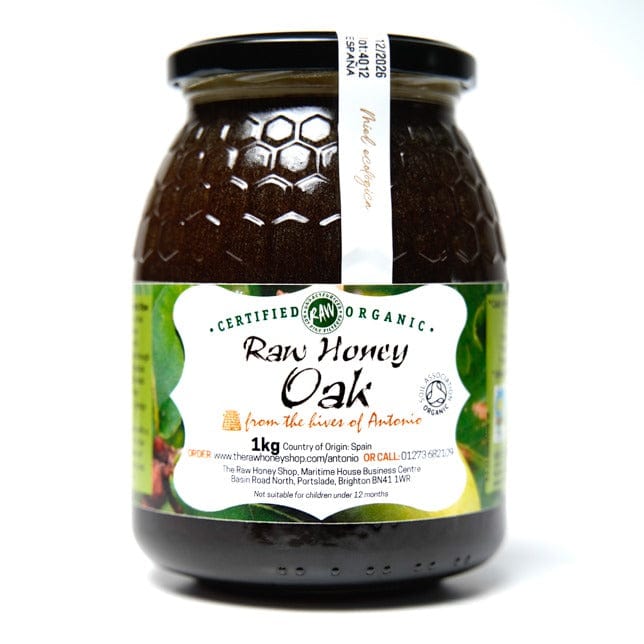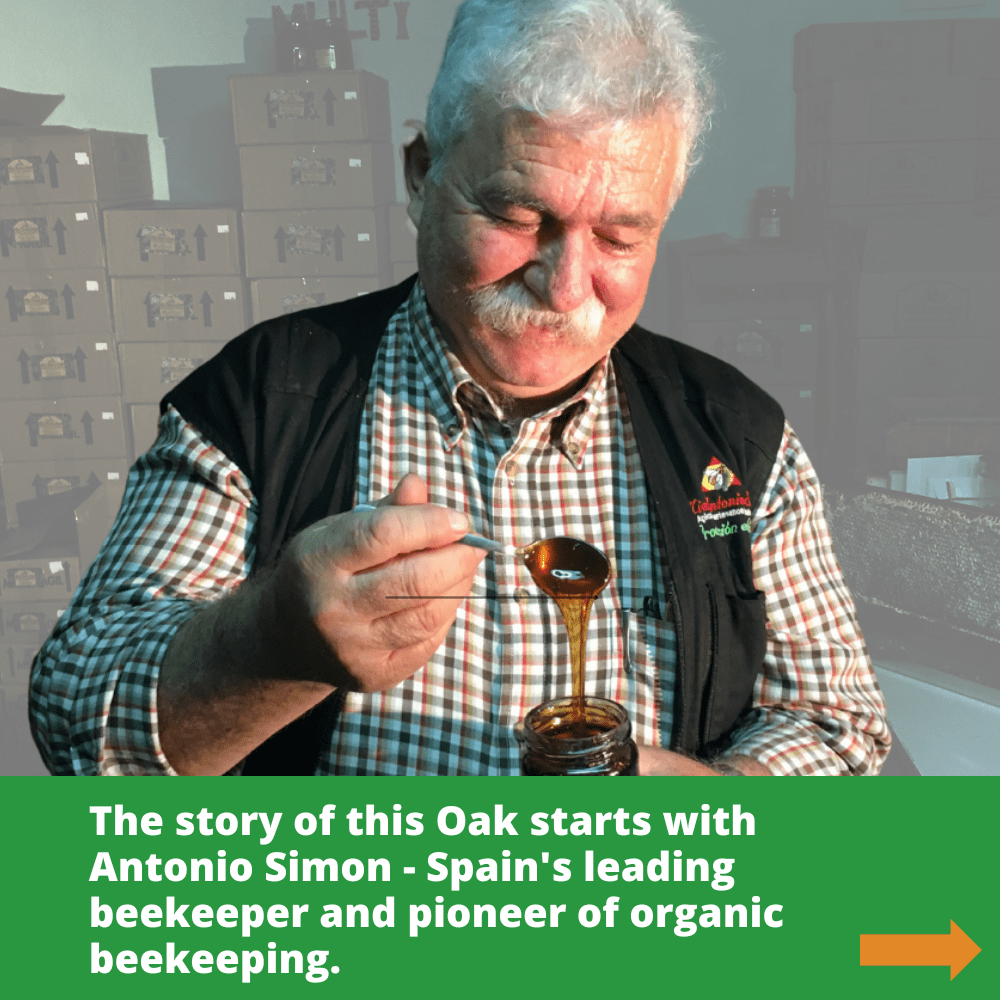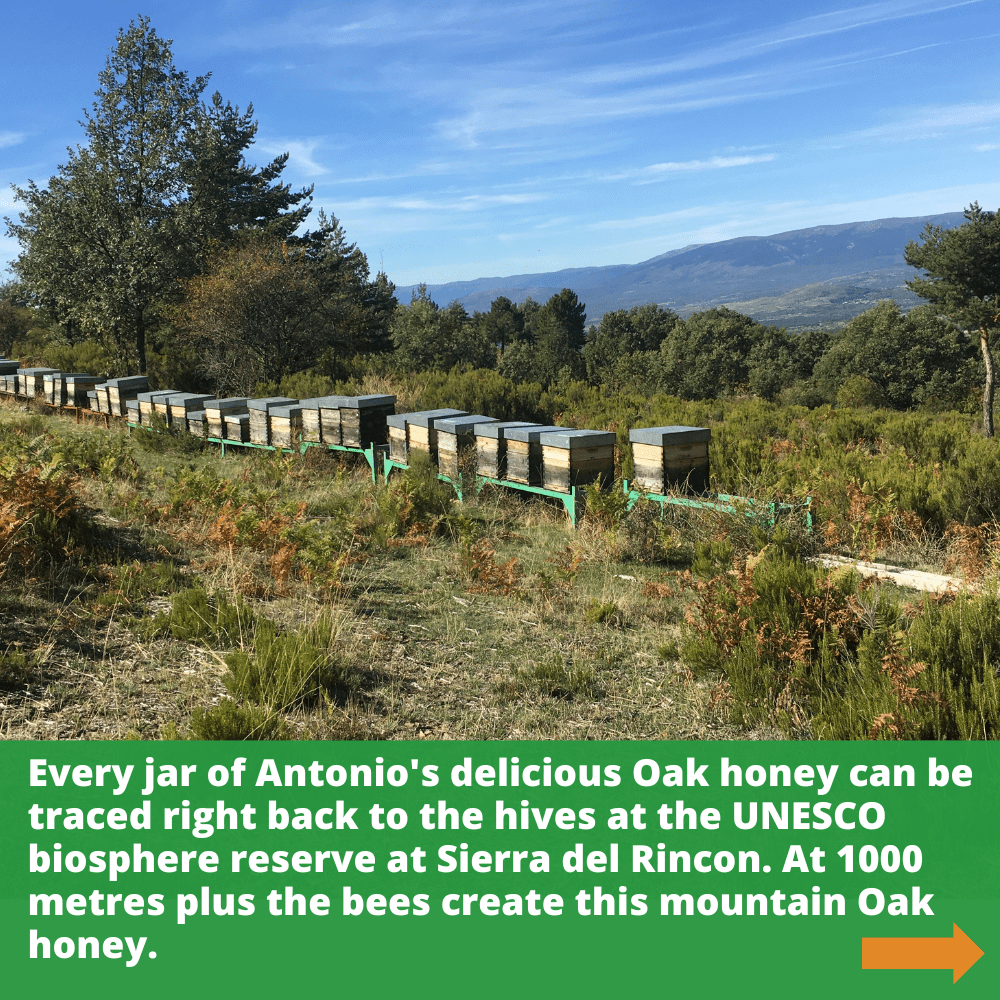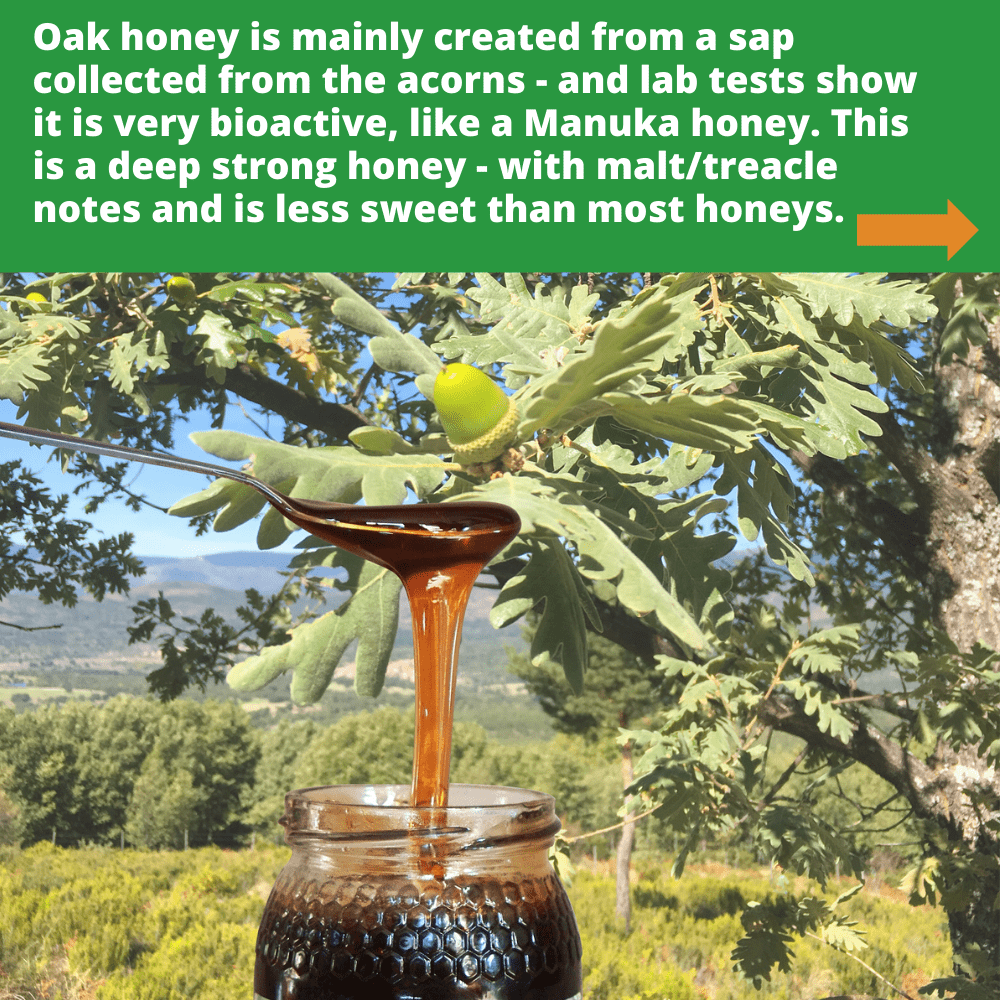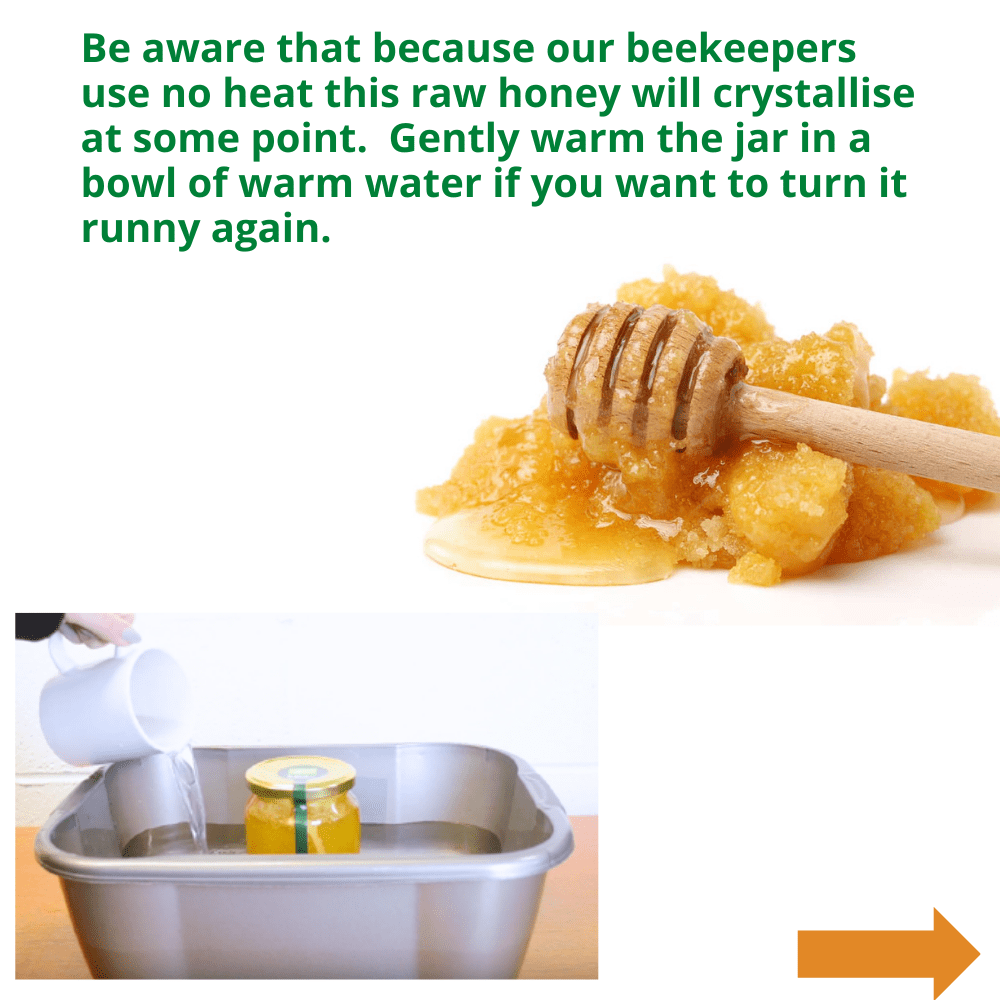Raw Certified Organic Oak Honey - Platinum award winner 2022 Runny
- Regular price
- GBP 27.99
- Sale price
- GBP 27.99
- Regular price
-
GBP
"Very good. I found the oak honey very effective in healing my almost permanent sore throat." Angela, UK
Platinum Winner in the 2022 London Honey Awards
Winner in the Great Taste Awards 2022
Antonio's Raw Organic Oak honey: is a very deep and rich tasting tree honey; it has a fruitiness as well as a deep woody flavour. Tree honey tends to be dark, have a stronger flavour and are less likely to set due to a relatively low glucose content.
More on the flavour: Antonio's raw oak honey is a unique type amongst the tree varieties. It has a deep earthy taste with lots of malt and a touch of smokiness - quite savoury and not as sweet as other varieties.
Colour: This particular oak honey is very dark in colour, almost black. In some cultures, dark honey is very highly valued.
Where does the honey come from? This variety of oak honey comes from trees growing at the Sierra del Rincon UNESCO Biosphere Reserve, where no chemical treatments are allowed. The trees grow at around 1100 metres in an extremely wild and untouched place.
Who produces the honey? The bees of Antonio Simon, a 4th generation beekeeper who takes pride in producing honey in a traditional way without adding or taking away anything. Antonio's hives are based in the mountain ranges north of Madrid, his beekeeping practices and the land he has his hives on have been certified as organic by the Committee of Organic Agriculture in Madrid.
What about the tree that the honey comes from? The oak tree, also known as Roble in Spanish, is a large deciduous tree which is surprisingly part of the beech family. Some oak trees can live over 1000 years! The bees love to feed on the sap that comes from the tree's acorns.
Common Uses: Oak honey is good to use in recipes such as cakes, cookies, desert toppings, warm honey teas, and meat glazes, this is because of the deep balsamic flavour notes.
More Oak Honey Facts: Oak honey comes from the acorns of the oak tree. The bees collect a sweet nectar that the acorns weep in July and August and create a unique type of honey. Other types of tree honey are produced from the residue left by the activity of aphids on trees but this is not the case with the oak honey. The bees directly collect the sweet fluid from the acorns. It tends to be less sweet but very potent.
Crystallisation:- Please know that raw honey does crystallise and is a natural process of raw honey (therefore we cannot except returns on honey that may have crystallised). We indicate on the website the state of each honey - either runny or crystallised but be aware this is to the best of our knowledge and the state can change quickly. If you want your honey runny and it has crystallised it's very easy to return it to runny go to this link Runny Honey or see this section under our FAQ's Why Is My Honey Crystallised?
We only supply raw honey because we believe this is how all honey should be. If you don't want your honey to crystallise then raw honey probably isn't for you.
For more information on why honey s
Visit this article and for a more scientific explanation go to wikipedia.org, search ‘honey’ and then go to the section headed ‘Physical and chemical properties’. https://en.wikipedia.org/wiki/Honey
About Us - Here at The Raw Honey Shop we take honey very seriously and we believe honey should be RAW, unpasteurised and 100% natural. Since 2008 we've been introducing our customers to a whole new world of pure all natural unpasteurised raw honey. With a product catalogue consisting of over 30 different raw and organic honeys we have a variety to suit all tastes.
Thank you for visiting our shop and we look forward to introducing you to a world of raw, pure and truly wonderful natural honey, the way the bees would want it!
*Product photo is representative of this product. Honey colour and texture may vary depending on the season and level of crystalisation. Please check the product title and description for accurate contents. Accurate Best before and Batch date will be printed on each jar as indicated in photo. Those shown are for visual purposes only.*


